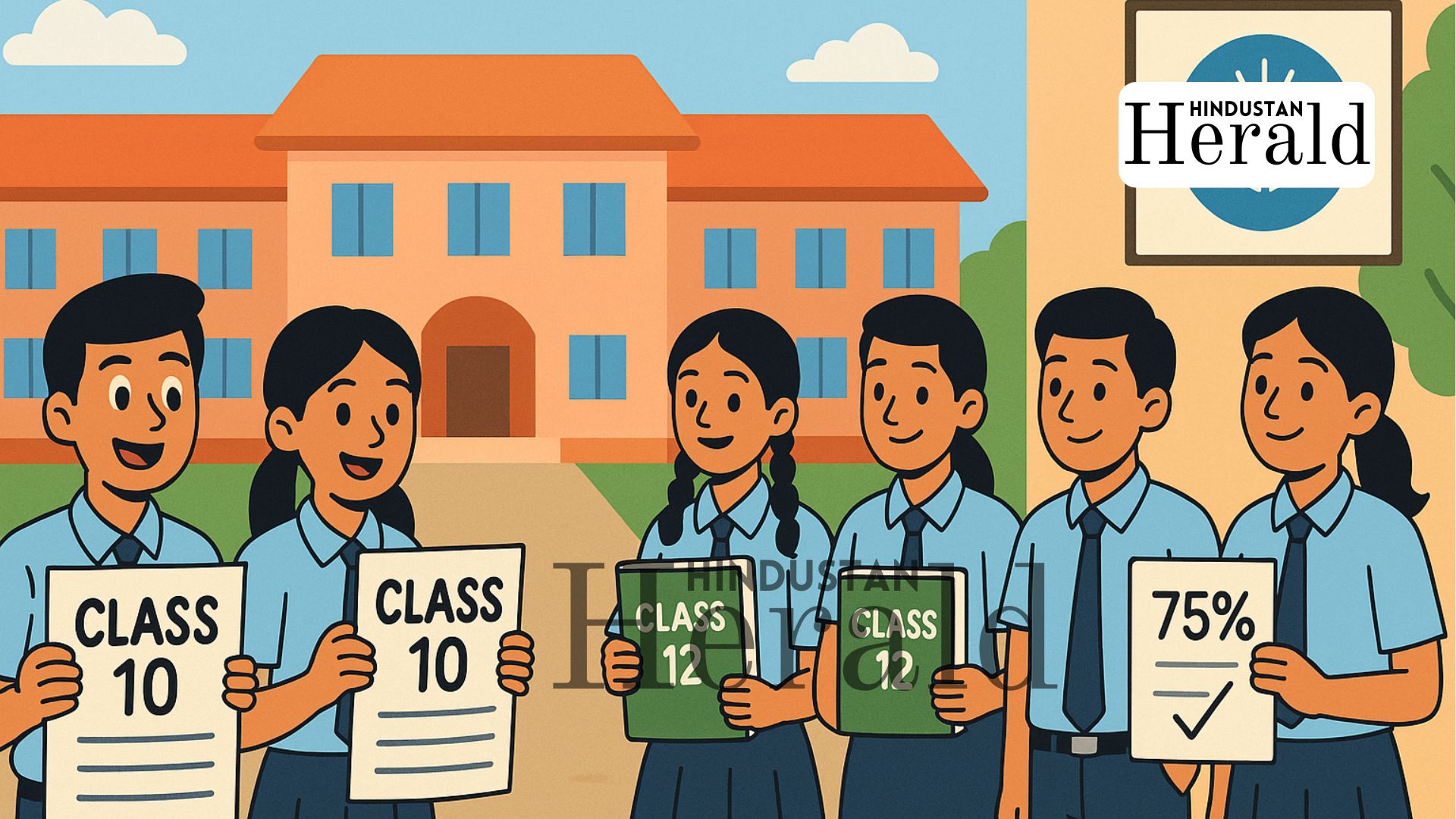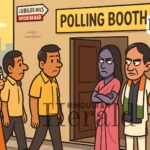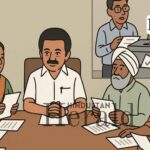New Delhi, September 18: The Central Board of Secondary Education (CBSE) has quietly but firmly redrawn the map for how India’s biggest school exam will look from 2026. The new rules, issued in a series of guidelines and circulars this week, touch almost every aspect of board life, from how much time students spend in classrooms to what subjects schools can offer and even how private candidates approach exams. For millions of families, these changes are not small tweaks. They reshape the very idea of what it means to prepare for Class 10 and Class 12.
Attendance No Longer a Formality
Perhaps the most direct shift comes in the form of mandatory 75% attendance. Until now, many parents and students saw attendance as negotiable, something that could be worked around with medical certificates or coaching classes. Not anymore. CBSE has made it clear: fall below 75%, and you don’t sit for the boards.
This rule is also tied to internal assessments. Projects, class tests, practicals, and the sort of tasks that often got pushed to the side are now central to exam eligibility. Teachers say this could bring discipline back to classrooms. But some parents are already nervous. What happens if a student is dealing with chronic illness? What about children who juggle sports at the national level? The board has promised to consider genuine cases, but the emphasis is unmistakable: presence in school matters as much as performance in exams.
Class 10 Boards Twice a Year
Another big headline is the decision to hold Class 10 board exams twice annually starting in 2026. The first round will be compulsory, the second optional. Students can take both and retain their best score.
It is a move that mirrors the style of competitive exams like JEE Main or CUET, where candidates get multiple shots. For students, this could feel like a safety net. Fail once, and there is another chance within the same year. Yet teachers warn it could just as easily become a trap: an endless cycle of preparation, pressure, and resits that may stretch out stress rather than reduce it.
The Two-Year Continuity Model
In a more structural change, CBSE has redefined how it sees the academic ladder. Classes 9 and 10 will now be treated as a single block leading to the Class 10 exam, and Classes 11 and 12 as another block culminating in the Class 12 exam.
It sounds simple, but in practice this means schools will need to plan lessons with longer continuity. No more treating Class 9 as a warm-up or Class 11 as a “light year.” Both years will directly count toward board preparation. The reform echoes the National Education Policy 2020, which wanted exams to assess sustained learning rather than just last-minute cramming.
A Blow to Private Candidates
One of the most controversial announcements concerns private candidates. Starting in 2026, they can no longer register for an additional subject in Class 12. For years, students used this route to switch streams, from science to humanities or commerce to arts, or to pick up an extra subject to boost college applications.
Now, that door is closed. The decision, reported by Jagran Josh, has sparked criticism. Education activists argue that this hits non-traditional learners the hardest, including students who could not attend regular school, children of migrant workers, or those who rely on private mode for flexibility. For them, an extra subject was not luxury, it was opportunity.
Schools Put Under The Scanner
CBSE has also raised the bar for schools themselves. From now on, a school cannot simply list a subject in its brochure unless it has qualified teachers, proper infrastructure, and prior approval from the board.
For urban schools with money and staff, this may not sting. But in smaller towns, where finding a Sanskrit or Computer Science teacher is often a struggle, it could cut down student choices. The board argues it is a matter of quality control. Critics say it risks narrowing opportunities for students in already underserved regions.
Registration Tightened, Digital IDs Mandatory
Administrative rules have tightened too. Students entering Class 9 and 11 must now go through a stricter registration process, with every child being assigned an APAAR ID a digital academic identity that follows them through school and beyond.
Schools are required to provide verification slips to families, creating a paper trail of accountability. Overseas CBSE schools will get some relaxation, but in India the shift is clear: student data is moving to a centralized, digital system. It is efficient on paper, though some parents worry about data privacy and misuse.
The Push Toward Competency and Skills
Reports in The Economic Times point to another direction CBSE is moving in: more competency-based exams and skill-focused electives. The idea is to test how students apply knowledge, not how well they memorize textbooks. Digital evaluation, scanning answer sheets, and reducing manual errors are also in the pipeline.
These are not entirely new ideas. CBSE has been talking about competency-based learning for years, but the 2026 cycle could be when it becomes unavoidable. Teachers will have to adapt their teaching methods, and students will need to get used to questions that demand reasoning over recall.
What It Means For Families
Put together, these changes mean the daily rhythm of school life will shift.
- For students, the era of disappearing for coaching and returning only before boards is over. Attendance, projects, and year-round performance now matter.
- For parents, the pressure is more subtle. Monitoring daily engagement may now be as important as investing in extra tuition.
- For schools, compliance will be costly. Hiring staff, building infrastructure, and meeting approval norms are non-negotiable.
There is also the psychological side. Two exam cycles for Class 10 may reduce stress for some but could amplify it for others. Cutting out extra subject options for private students might streamline records but narrows second chances.
A Test Case For NEP 2020
In the bigger picture, CBSE’s 2026 rules are a sign that the NEP 2020 is no longer theory. The emphasis on holistic learning, digital IDs, competency testing, and school accountability are all straight from the policy’s playbook.
But the success of these reforms will depend less on policy documents and more on classrooms. Can schools in rural Bihar or small towns of the Northeast find trained teachers in niche subjects? Can families afford the extra costs of compliance? Will students see this as relief from rote learning or just another layer of pressure?
Those answers will only emerge as the Class of 2026 becomes the first batch to live through this transition. For now, one thing is clear: the boards are no longer the same old exams they once were. They are becoming a much stricter and, in many ways, more uncertain gateway to the future.
Stay ahead with Hindustan Herald — bringing you trusted news, sharp analysis, and stories that matter across Politics, Business, Technology, Sports, Entertainment, Lifestyle, and more.
Connect with us on Facebook, Instagram, X (Twitter), LinkedIn, YouTube, and join our Telegram community @hindustanherald for real-time updates.





